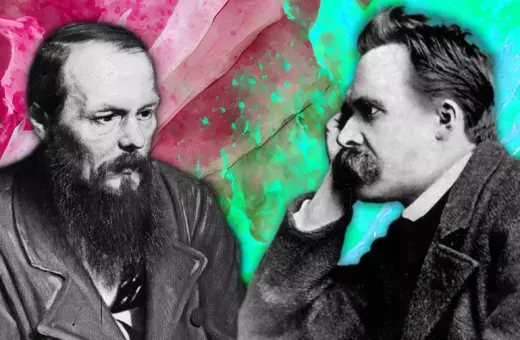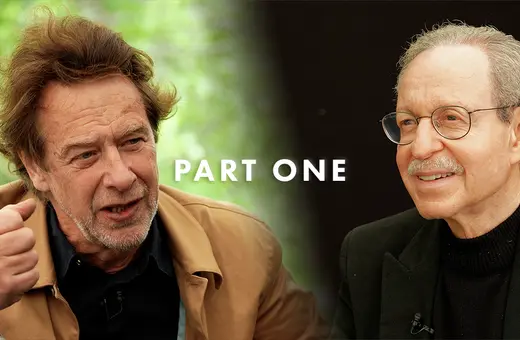Conferences on philosophy have much in common with academic conferences on anything else. But in one way they differ. Amongst philosophers, a lecture often matters less than what follows — ‘Q&A’, the question-and-answer period. That is when the speaker’s arguments and conclusions are put to the test.
Questioners propose counterexamples, allege fallacies, discern ambiguities. In response, the speaker fights for the life of their cherished ideas. Exchanges continue, back and forth, over several turns. The rest of the audience watches and listens keenly, as if following a chess match, trying to work out who’s winning.
Sometimes a draw is offered with the words “It’s a stand-off” and tacitly accepted; sometimes the chair intervenes to cut short a stalemate. There is a code of signals to the chair: a raised hand means a new question, a raised finger a follow-up on the current point. A serious conference may schedule an hour for Q&A after each talk.
When it comes to the outcome, the chess analogy is misleading, since it suggests that, once the exchange is over, it’s always clear who won. But the rules of argument are much less clear than the rules of chess, and can themselves be disputed, so two sides may disagree on the legitimacy or effect of a move. The chair is no umpire or referee, and doesn’t rule on such matters. There may be no consensus on who had the better of the exchange. Perceptions can depend on prior theoretical commitments. Indeed, the exchange may itself have been partly or wholly on the legitimacy of moves in the lecture.
___
"When the philosophical climate goes bad, aggressive bluster or suave sophistry can silence careful reasoning. But to discourage sharp-edged questions only exacerbates matters."
___
Some philosophers are unhappy with this model of philosophical discussion as gladiatorial combat. Those who lack the confidence to step into the arena are consigned to the passive role of mere spectators, yet self-confidence is not highly correlated with insight. What has single combat to do with the search for truth? There is something to such worries. When the philosophical climate goes bad, aggressive bluster or suave sophistry can silence careful reasoning. But to discourage sharp-edged questions only exacerbates matters, by making it easier for high-prestige speakers to bluff, and get away with bad arguments.
If the emperor has no clothes, everyone should feel entitled to say so. I once heard a lecture by a well-known scholar of the philosopher Friedrich Nietzsche, urging that Nietzsche’s philosophy is not mere academic theorizing; if taken seriously, it transforms one’s life into something radically different and unconventional. In Q&A, an undergraduate asked him how come in that case he was a professor of philosophy delivering an academic lecture in the conventional way to a student philosophy society. The Nietzsche scholar was huffily dismissive: “I don’t see the relevance of that question”. Everyone else in the room did. The emperor may not enjoy being told he has no clothes, but he can still benefit; he may even take the radical step of getting some. As for the Nietzsche scholar, twenty years on he remains a professor of philosophy in the same respectable department, regularly publishing academic volumes on his usual themes.
Admittedly, I gave a very partial view of philosophical discussion. I presented it as a zero-sum game, where one party’s gain always equals the other party’s loss. Many exchanges in Q&A are straightforwardly cooperative. Audience members may suggest additional evidence for the speaker’s idea, or new applications of it, or ways to generalise it, or modifications of it in the spirit of the speaker’s aims, or ways to simplify a supporting argument. The threat of an objection does not always lurk behind a request for clarification.
___
"The phenomenon of two sides arguing against each other is too central to philosophical practice to be dismissed as misbehaviour."
___
Nevertheless, the phenomenon of two sides arguing against each other is too central to philosophical practice to be dismissed as misbehaviour. Moreover, it is connected with the starting point of philosophy. For how is one to discover the limitations of one’s common sense, and get beyond them? A natural answer is: by meeting someone whose common sense is in conflict with one’s own. By arguing with each other, both sides have the opportunity to test the strengths and weaknesses of their starting points.
In politics, it is sometimes wise to brush disagreements under the carpet, since the alternative may be disunity or even violence. Intellectual inquiry does not flourish under those conditions. It requires relevant disagreements to be got out into the open, not muffled up. I have occasionally experienced philosophical cultures in which hard criticism was frowned on. They were deeply hierarchical: those lower down the hierarchy were not supposed to question those higher up. It is an ideal habitat for error.
A feel-good slogan is that discussion should be constructive, not destructive. It sounds like a platitude, but imagine telling city planners that they should always build houses and never knock them down. What happens when space is in short supply and filling up with bad housing? In philosophy, good and bad ideas compete for attention, which is also in limited supply. Of course, the slogan that discussion should be destructive, not constructive, would be far worse, but we need to get beyond such simplistic slogans if we are to understand better what kinds of discussion will help us most to answer philosophical questions correctly.
Adversarial Philosophy
A useful comparison is with the adversarial system for settling legal disputes. Each side has an advocate, to argue its case as strongly and effectively as possible. In a criminal trial, there is the prosecution and the defence. This is one widespread format for getting at the truth in cases of disagreement. The idea is to ensure that each side gets a fair hearing. For that to work properly, each side must be competently represented, by someone willing and able to find and present the favourable evidence and arguments.
The system has obvious disadvantages, for instance when one side is more competently represented than the other. But it also has advantages over the system of the single investigating magistrate. For even the fairest of magistrates is still human, and may reach premature conclusions, become demotivated from pursuing alternative lines of inquiry, and so miss the truth. The adversarial system is well designed to provide adequate motivation for each side of the argument. Similar considerations apply to philosophical disputes. Although lawyers argue on the side that pays them, while philosophers usually argue on the side of their intellectual sympathies, both have strong incentives to argue well.
Like defence and prosecution lawyers, philosophers often argue for what others see as a lost cause. The reason is different, though: typically, they become over-attached to their own ideas. This is not a peculiarity of philosophers: it is a natural human trait. With pardonable exaggeration, the great physicist Max Planck said that truth triumphs in science not because its opponents are won over, but because they die. Such obstinacy is not all bad; it ensures that ideas are given every chance to overcome criticisms, rather than being abandoned prematurely. When two senior philosophers argue some issue out with each other in public, with prestige at stake, it is often clear that neither of them will ever persuade the other; even so, it is not a waste of time if there are uncommitted students in the audience, making up their own minds as to which of the two is having the better of the argument.
___
"The great physicist Max Planck said that truth triumphs in science not because its opponents are won over, but because they die."
___
Sometimes, even more like lawyers, philosophers argue on behalf of an idea they do not really believe in, just because they think it deserves to be taken seriously.
The legal comparison reminds us that court cases, under both adversarial and non-adversarial systems, often result in unjust verdicts. The challenge is to find specific changes in procedure that would make such verdicts less likely—just saying that courts must proceed constructively would not help. Similarly, error often triumphs over truth in philosophical debate. The challenge is to find specific changes in procedure that would make such results less likely. I wish I knew how to meet that challenge.
The adversarial system requires a judge and perhaps jury to adjudicate between the two sides, to reach a decision. In philosophy, there is less urgency about reaching a decision than in the courts, but insofar as anything plays the role of judge and jury, it is the wider community of philosophers. The first requirement for it to play that role is a disposition to listen carefully to what all parties say. The second requirement is an appreciation of the rules of argument. I know many philosophical communities that do well—though very far from perfectly—on both scores. Because such virtues are prized, each generation tends to learn them from its predecessors. Of course, they are by no means exclusive to philosophy. Education by its nature favours and inculcates the ability to attend carefully to what is said. Likewise, education and experience in any academic discipline foster appreciation of the rules of the types of argument characteristic of that discipline— for instance, in the case of mathematics, the rules of mathematical proof. In philosophy, interpersonal disputation plays such a large role that philosophers unsurprisingly tend to have an unusually sensitive appreciation of its underlying rules.
When careful listening and appreciation of the rules of argument are widespread in a community, bullying, bluff, and sophistry are typically counterproductive, because they make the perpetrator look stupid. There is a corresponding incentive for those with good points to make them, because they can expect to be listened to.
Naturally, there is also the fear that, if you make what feels to you like a good point, it may be found out by others to be a bad point after all. Some level of such a fear is no bad thing, since it comes with a capacity for self-criticism and a respect for the intelligence of others. But too much fear is paralysing. What can help is that philosophers experienced in listening carefully and applying the rules of argument learn how hard philosophy is, how easy it is for even the best philosophers to go wrong, and so are less inclined to judge someone on the basis of one misfire.
To say that a philosophical culture of interpersonal argumentation encourages competition instead of cooperation is like saying that a chess club encourages competition instead of cooperation. There’s some truth in it, but it’s a facile contrast. Chess is a competitive game, with one player winning if and only if the other loses, but the club itself is a cooperative venture of its members, and even a single game of chess involves cooperation between the players, because both want to play, for pleasure or reputation or to improve at chess.
___
"To say that a philosophical culture of interpersonal argumentation encourages competition instead of cooperation is like saying that a chess club encourages competition instead of cooperation. "
___
Similarly, although there are winners and losers in some philosophical disputes, the institution of philosophy is a cooperative venture of philosophers, and even a single philosophical dispute involves cooperation between the disputants because both want to argue the point. Indeed, although chess does not primarily aim at knowledge in the way philosophy may primarily aim at knowledge, games of chess do in fact add to knowledge, for instance of which positions are wins for black.
Similarly, philosophical disputes add to knowledge, at the very least of which philosophical positions are defensible. Both philosophers in a dispute may improve their theories as a result, even if they still disagree.
Logic Games
There is nothing new about the role of interpersonal dispute as a medium for philosophy. In medieval scholastic philosophy, oral disputations were formalized as a sort of game, obligationes, played in Latin, with rules almost as formal as those of chess. One side had to argue for a statement, the other side against it, in accordance with the strict rules of medieval logic, most of which are still recognized as valid. Each side had to be explicit about which of the other side’s premises (assumptions) they accepted, and which they rejected. They could distinguish several senses of a premise, accepting it in some, rejecting it in others. Someone senior would act as umpire, to ensure that the rules were properly applied. The spirit of the game is still recognizable to modern philosophers,
even though the details of the rules now look too restrictive, because modern logic has identified many valid forms of reasoning irreducible to the forms studied in medieval logic.
There are also logic games with rules more closely related to modern logic. They typically involve two players—a defender and an attacker—and a statement in dispute (see Rules in a logic game if you want more details). If the statement is true, the defender has a winning strategy. If the statement is false, the attacker has a winning strategy. Thus if both players make the best moves available to them, the defender will win if the statement is true, and the attacker will win if the statement is false: the outcome of the game corresponds to the truth-value of the statement. Such games show the naivety of a general contrast between games and the search for truth, since their rules are designed precisely to serve the search for truth.
Rules in a logic game
If the statement in dispute is ‘Everything is so-and-so’, the attacker chooses an object, gives it a name ‘N’, and the game continues with ‘N is so-and-so’ as the new statement in dispute (‘so-and-so’ could be anything, for instance ‘green’). The attacker gets to choose because it only takes one counterexample to falsify (show false) an ‘every’ statement, and the attacker is the one who needs to find it.
If the statement in dispute is ‘Something is so-and-so’, the defender chooses an object, gives it a name ‘N’, and the game continues with ‘N is so-and-so’ as the new statement in dispute. The defender gets to choose because it only takes one example to verify (show true) a ‘some’ statement, and the defender is the one who needs to find it.
If the statement in dispute is ‘A and B’, the attacker either chooses ‘A’ or chooses ‘B’, and the game continues with the chosen one as the new statement in dispute (‘A’ and ‘B’ could be any statements,
for instance ‘It’s raining’ and ‘It’s cold’). The attacker gets to choose because it only takes one false component to falsify an ‘and’ statement, and the attacker is the one who needs to find it.
If the statement in dispute is ‘A or B’, the defender either chooses ‘A’ or chooses ‘B’, and the game continues with the chosen one as the new statement in dispute. The defender gets to choose because it only takes one true component to verify an ‘or’ statement, and the defender is the one who needs to find it.
___
"Plato expressed disapproval of written philosophy, because one can’t engage in question-and-answer with a book."
___
If the statement in dispute is ‘Not A’, the defender and the attacker swop roles and the game continues with ‘A’ as the new statement in dispute (for instance, if ‘A’ is ‘It’s raining’, ‘Not A’ is ‘It’s not raining’).
The reason for the role-swopping is that the truth of ‘Not A’ is equivalent to the falsity of ‘A’, and the falsity of ‘Not A’ is equivalent to the truth of ‘A’, so the defender of ‘Not A’ should attack ‘A’ and the attacker of ‘Not A’ should defend ‘A’.
Of course, most philosophical discussion is much less formally structured than a logic game. Nevertheless, such games provide a good model of how, under suitable conditions, an adversarial framework can serve the pursuit of truth.
Dialogues
In less formal terms, the natural written form to represent philosophical disputes and question–answer exchanges is the dialogue. It’s also one of the oldest forms of philosophical writing. Plato’s dialogues are still the most famous and evocative examples of the genre. Despite that, Plato expressed disapproval of written philosophy, because one can’t engage in question-and-answer with a book. Perhaps a written dialogue is the next best thing.
The Greeks also tended to pose philosophical paradoxes in question-and-answer form, where contemporary philosophers would present the deduction of an absurdity from plausible premises. An example is the sorites paradox, which shows the acute difficulty of applying vague terms soundly. The Greeks posed it as a long series of questions and answers:
Q: Do grains make a heap?
A: Yes.
Each move reduces the logical complexity of the statement in dispute. Sooner or later, the game reaches a point where what is in dispute is a logically simple statement. It is assumed that such
statements can be verified or falsified by observation. If it is true, the defender wins. If it is false, the attacker wins.
Q: Do grains make a heap?
A: Yes.
Q: Do grains make a heap?
And so on, in principle, all the way down to:
Q: Do grains make a heap?
One gets that sinking feeling. To answer any question in the series differently from the next seems like treating the vague word ‘heap’ as more precise than it really is. Yet it is absurd to give all questions in the series the same answer, since the answer ‘Yes’ is obviously right for the first question and obviously wrong for the last one. However one answers, one looks and feels silly. By contrast, modern philosophers formulate the paradox as a deductive argument with two plausible-sounding premises:
Major premise: For every number n, if n+ grains make a heap then n grains make a heap.
Minor premise: 10,000 grains make a heap.
They then show how to reason step by step all the way down to the absurd:
Conclusion: 0 grains make a heap.
The difference may not seem large, but it brings out how much the Greeks regarded doing philosophy as an interpersonal activity, not a solitary one.
Plato didn’t put himself as a character into his own dialogues. His teacher Socrates appears, originally modelled on the historical Socrates. In the later dialogues, Plato used Socrates or another character as more of a mouthpiece for himself, but always with some distancing effect, so he could try out ideas without fully committing himself to them. Other philosophers have chosen the dialogue form to express views too dangerous for them to publicly endorse, by not officially identifying with the character closest to their own thinking. Even in what would now be classified as natural science, Galileo wrote his Dialogue Concerning the Two Chief World Systems that way to distance himself from the heretical new sun-centred astronomy of Copernicus while still demonstrating its advantages over the traditional earth-centred astronomy of Aristotle and Ptolemy. The subterfuge failed: he made it too clear which side won the arguments, so the Roman Catholic Church banned the book and imprisoned him. David Hume did a slightly better job of concealing his subversive sympathies in Dialogues Concerning Natural Religion, in his case scepticism about the existence of a god. Because he was suspected of atheism, he had been turned down for a professorship in philosophy at Edinburgh University in favour of a far less distinguished candidate. Gottfried Wilhelm Leibniz and George Berkeley also wrote major works in dialogue form. With views closer to religious orthodoxy, they could make it clear which character they identified with, though the result was a loss of dramatic tension.
___
"In general, the philosophical dialogue is a less pluralistic form than it looks: it has various characters but only one author."
___
In general, the philosophical dialogue is a less pluralistic form than it looks: it has various characters but only one author. At worst, it is a dialogue between the ventriloquist and his puppet. In contemporary philosophy, it plays only a minor role. Logic formulas and footnotes are ill at ease in a dialogue. Nevertheless, the form retains significant strengths. For expository purposes, it embodies the interaction of different points of view in a vivid, memorable, and perspicuously structured way. A reader’s emotions are more easily engaged by a dispute between imagined people than a logical inconsistency between abstract theories.
But doesn’t philosophy require a coolly rational, objective, unemotional attitude? That’s psychologically unrealistic. Even in science, humans perform best when strongly motivated. Burning curiosity is an emotion. When you don’t care which of the answers to a question is right, you won’t be alert to the subtle logical differences between them. If you like one character and dislike another, you scrutinize each move in their dialogue as a potential threat or opportunity. The emotions you feel may reveal to you the underlying philosophical instincts you had all along. Even the less savoury emotions associated with competitiveness, rivalry, and ambition can be harnessed to play a constructive role in natural science and philosophy when the disciplinary culture rewards good work over bad, valid arguments over invalid ones. We saw how that’s possible in philosophical disputes.
The dialogue still has uses as a medium for philosophical research. Sometimes each side regards the other’s theory as nonsense, rather than false. Thus one can’t expound the theories from a neutral standpoint, for expounding a theory presupposes that it makes sense. In such cases, it’s best to let each side speak for itself, which is in effect the dialogue form. An example is a current dispute in philosophical logic between ‘generality absolutists’, who say, “It makes sense to generalize about absolutely everything whatsoever, without restrictions”, and ‘generality relativists’, who say, “However many things you generalize about, it always makes sense to generalize about even more”. Each side regards the other’s words as somehow self-undermining, failing to make the kind of sense they want to make.
Short of a proper dialogue, it is very common, having presented one’s view, to give some potential objections to it with one’s replies. It is a kind of hypothetical dialogue with the reader:
“If you are tempted to make this objection, here is my reply”. This often helps to clarify just what the view implies, and what it does not.
Discussions of scepticism often focus on imaginary dialogues with a sceptic. Contemporary epistemologists are much concerned with the vulnerability of common-sense ways of thinking and talking to sceptical objections. They dramatize it in minidialogues like this:
Mary: You don’t know much about the animals in this zoo.
John: That’s not fair! I know the animal in this cage is a zebra.
Mary: For all you know, it’s just a mule cleverly painted to look like a zebra. The zoo may be having financial difficulties.
John: I suppose you’re right. I was wrong. I don’t know it’s a zebra, after all.
Mary’s next step could be to suggest that John doesn’t even know that he’s awake, because for all he knows he’s asleep in bed, dreaming he’s at the zoo.;
The difficulty of John’s position also shows something about the dangers of dialogue. For what should he say, in order not to concede Mary’s point? If he says, “Come off it! You know as well as I do that it’s a zebra”, he will sound dogmatic and obtuse. Once your interlocutor has introduced a possibility, there’s conversational pressure on you to take it seriously, not just dismiss it. The sceptic ruthlessly takes advantage of such etiquette to cut the ground away from under the non-sceptic’s feet. The culture of philosophy supports those sceptical moves by its unusually tolerant attitude to bizarre possibilities.
John could reply to Mary, “Good point! But for present practical purposes, if you don’t mind, I’ll just assume I do know it’s a zebra”. That sounds more polite and accommodating. But in practice it will probably turn out just to be a more diplomatic way of not taking Mary’s point seriously, as will emerge if Mary answers, “Actually, I do mind”. If you are really unwilling to make assumptions your conversation partners won’t grant, you hand them terrifying power over your own thought. Sceptics will be only too pleased to exploit that power to drag you into the sceptical pit with them. You had best be careful whom you talk to.
Extract from Doing Philosophy: From Common Curiosity to Logical Reasoning by Timothy Williamson, to be published by Oxford University Press on 23 August 2018, available in hardback and eBook formats, £12.99. Republished here with permission - copyright of Oxford University Press.





















Join the conversation